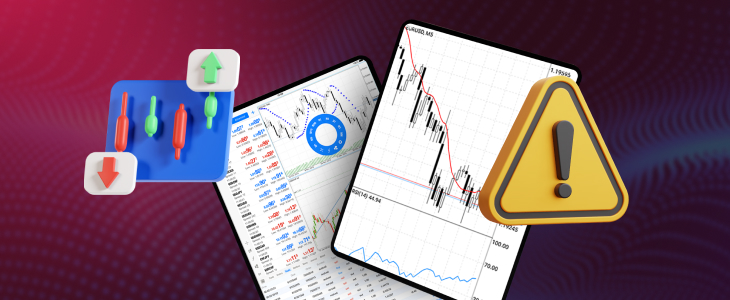The forex operates by several factors, and trading efficiently on this platform will require you to gain knowledge of these factors. For instance, you can also refer to risk parity, a portfolio-balancing approach. Furthermore, it mainly operates by focusing on equalizing the risk over assets.
Moreover, the forex trading facility operates in a rather complex way, where currency pairs fluctuate for several reasons. These reasons include intergovernmental news, interest rates, etc. Among all these factors, risk parity stands out as a management strategy.
In this article, we will talk about how risk parity works in the forex market and its operational aspects.
How Do You Define Risk Parity?
You can mainly refer to risk parity as an investment tactic for management purposes in forex trading. For instance, this issue is the capital of each asset’s risk contribution in a portfolio, other than focusing on the conventional standard basis.
For example, these conventional metrics include anticipated returns or market capitalization. However, when it comes to risk parity, each asset distributes the portfolio’s inclusive volatility evenly. Alongside, you can also apply the risk parity in CFD trading.
Furthermore, the concept mainly derives from the idea that conventional assets are allocated to overweight volatile products like stocks. Nonetheless, it also underweights the less volatile assets like bonds, ultimately, making a disparity in risk.

The Significance of Risk Parity in Forex
The forex market is extremely volatile, as you normally use leverage and positions. Furthermore, traders or forex brokers sometimes take these factors on margin. Moreover, this conventional procedure makes risk management even more complicated.
Although the conventional portfolio may allocate the capital evenly for many currency pairs, it still ignores a critical problem. For instance, as you can already guess not all currency pairs have the same nature. Even though the EUR/USD pair is less volatile than the GBP/JPY, it still allocates an even portfolio.
Nonetheless, the following currency pairs would immensely contribute to the risk at different levels. Nonetheless, if you apply a risk parity in the process, it would ensure that every currency pair is distributed to the portfolio risk evenly.
Making A Risk Parity Forex Portfolio
You can also use a forex trading platform like MetaTrader 4 and apply the risk parity in your trading. However, if you want to build a risk parity forex portfolio, the steps you will require are:
Choosing Currency Pairs
There are many currency pairs you can get for your forex trading. For example, they are EUR/USD, GBP/USD, USD/JPY, etc. Furthermore, you will also have to consider many factors like forex liquidity, volatility, and many more.
Evaluating Connection And Volatility
You can implement the historical data to evaluate the volatility of every currency pair alongside the connection matrix between them. Furthermore, this procedure will assist you in comprehending both the interaction between currency pairs and the discrete risk.
Calculating The Risk Contribution
The contribution of every asset relies on its connection, volatility, and weight with different assets. For example, the concept indicates that the weight adjustment for every asset is evenly distributed to the portfolio’s inclusive risk.
Optimizing Weights
You can use different optimization algorithms to maintain the portfolio weight. Furthermore, it will help the chosen forex pairs to evenly distribute the inclusive portfolio risk. However, this procedure sometimes requires you to solve a stilted optimization query by implementing numerical ideas such as:
- Quadratic Programming.
- Gradient Descent.
- Solver Libraries in Python.
Risk Parity Advantages in Forex
If you apply the risk parity strategy in forex trading, it comes with several benefits, such as:
Diverseness Over Risk Dimensions
You can diversify the conventional forex portfolios by pair, but there is still a chance for traders to face exposure to concentrated risk. However, this scenario occurs if some currency pairs appear more volatile than normal.
However, a risk parity ensures that every pair evenly distributes risk and gains more impactful diversification.
Optimized Risk-Sensitive Returns
The risk parity minimizes the concentrated submission to highly volatile assets, which can lower consumption and optimize the Sharpe ratio. Furthermore, it also offers superior consistency and output progressively.
Flexible to Market Changes
As the volatility in the forex market has a dynamic nature, the risk parity tactics are immensely flexible to guide through the volatile market. For example, the risk parity strategy operates by adjusting weights that rely on the ongoing risk intensity.

Disadvantages of Risk Parity in Forex
As we have mentioned several advantages of risk parity, but there are also some disadvantages that you may face. And some of the disadvantages include:
- Precise Volatility Calculation: Sometimes, market shocks or sudden spikes misinterpret the volatility calculation. However, you can use smoothing strategies or powerful calculators to help you in this situation.
- Recurrent Realignment: High trading charges and forex slippage may corrode returns if the risk parity plan needs recurrent accommodations.
- Leverage Risk: As the leverage serves as a crucial part in the risk parity strategy, it can massively increase losses in the forex market. Moreover, you need to regulate risk controls and the losses in the market.
In Conclusion
There is no doubt that risk parity serves as a great alternative strategy to the conventional portfolios in forex. Furthermore, you have to balance risk distributions other than capital to make more stable and strong portfolios.
As the forex market is continuously evolving with technical advancements, the implementation of the risk parity strategy has become crucial for traders. Although there are many bright sides to the risk parity strategy, there are also many downsides.
Also, talking about trading facilities, our FXCess platform can be a game-changer for your trading operations. Furthermore, our online trading facility offers many advantages, like affordable brokers, trading platforms, etc. Ultimately, our platform can make your overall trading operation convenient.
FAQs
1. How do you define the risk parity tactic of a portfolio?
– This risk parity tactic mainly operates to balance risk sources in a portfolio by issuing assets in proportion.
2. How can you position risk in a portfolio?
– The process will require you to create a diversified investment portfolio to alleviate the probable losses while expecting the estimated returns.
3. Does the risk parity strategy indicate balance?
– Yes, the procedure indicates balancing risk, other than only focusing on returns.
4. How do you define a 60/40 risk parity?
– The 60/40 procedure includes issuing portfolio assets so that every asset is distributed evenly across the portfolio risk.
Disclaimer:
This information is not considered as investment advice or an investment recommendation, but instead a marketing communication. FXCess is not responsible for any data or information provided by third parties referenced, or hyperlinked, in this communication.
